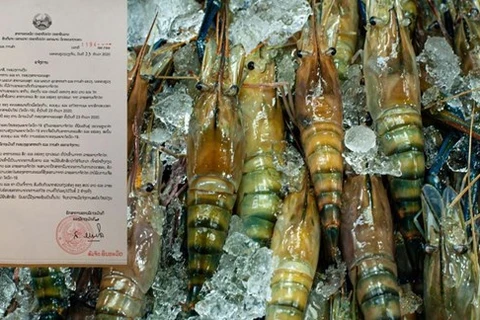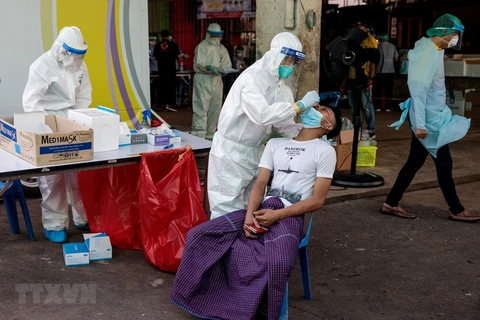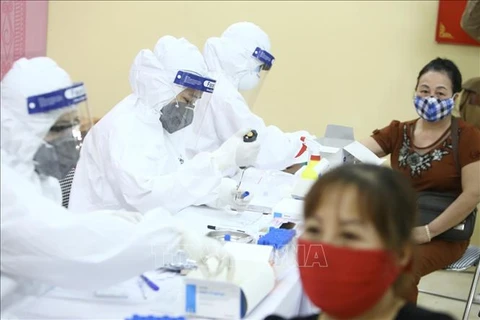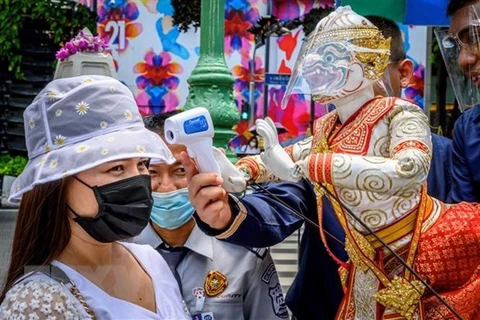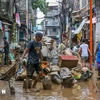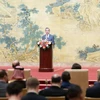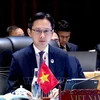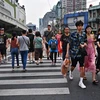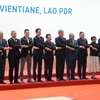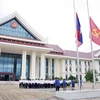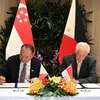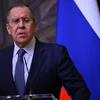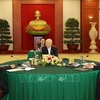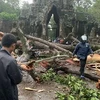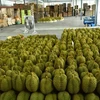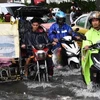 Air passengers walk through a thermal scanner at Don Mueang airport in Bangkok. (Photo: Bangkok Post)
Air passengers walk through a thermal scanner at Don Mueang airport in Bangkok. (Photo: Bangkok Post) Bangkok (VNA) – Several Southeast Asian countries are taking drastic measures with a view to preventing and controlling the COVID-19 pandemic.
The Thai Government on December 29 documented 155 new COVID-19 cases, raising the total in the nation to 6,440, including 134 local infections, 11 migrants and 10 quarantined arrivals.
One day earlier, Thailand announced its first coronavirus death in nearly two months, and tightened restrictions on entertainment activities in its capital in a bid to contain an outbreak that has reached more than half of the country's provinces.
Authorities put in place a ban in Bangkok on betting businesses and closure of its bars, nightclubs and music venues until January 4.
Thailand, the first country outside China to report a coronavirus infection, has recorded just 6,440 cases and 61 COVID-19 deaths, having brought earlier outbreaks under control. Its success has been attributed to tight restrictions on inbound travel and swift testing and contact-tracing.
Bangkok's tighter measures follow similar regulations in some of the 43 provinces with cases since a big outbreak was discovered 11 days ago among migrant workers at a seafood market in Samut Sakhon, a province near the capital.
The outbreak could hamper efforts to revive a crucial tourist industry devastated by the pandemic, as authorities ease some restrictions on foreigners and offer incentives to boost domestic travel.
While in Indonesia, Foreign Minister Retno Marsudi said on December 28 that international visitors will be barred from entering the nation for a two-week period to keep out a new potentially more contagious variant of the coronavirus.
The regulation, effective in January 8, comes days after Indonesia banned travelers from the UK, and tightened rules for those arriving from Europe and Australia to limit the spread of the new variant.
Indonesia earlier this year banned all foreign tourists from entry but some exemptions have been made for business travelers. The new regulation applies to all foreign visitors, except for high-level government officials or foreigners with residency permits, she said.
Since the country recorded its first infection 10 months ago, Indonesia has become the nation hardest hit by the pandemic, with over 719,000 COVID-19 cases and 21,400 related deaths.
Meanwhile, the Philippines on December 29 announced it will ban travelers from 19 countries and territories until mid-January 2021 as a measure to keep out a new variant of the coronavirus.
The regulation will be effective from midnight of December 29 to January 15, and cover Filipinos and foreigners arriving from the flagged countries.
The country previously imposed and later extended a flight ban from the UK until mid-January.
With 471,000 cases and 9,000 fatalities, the Philippines ranks second in Southeast Asia in the numbers of COVID-19 infections and deaths./.
VNA
